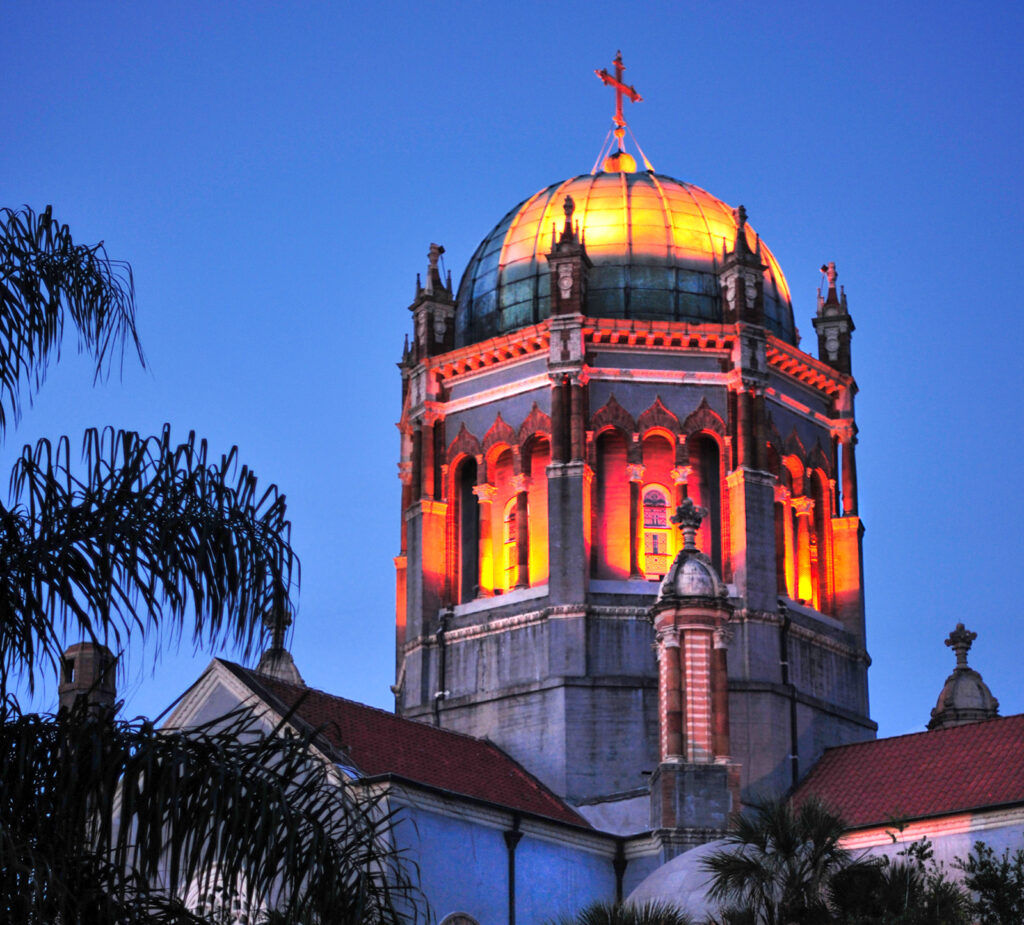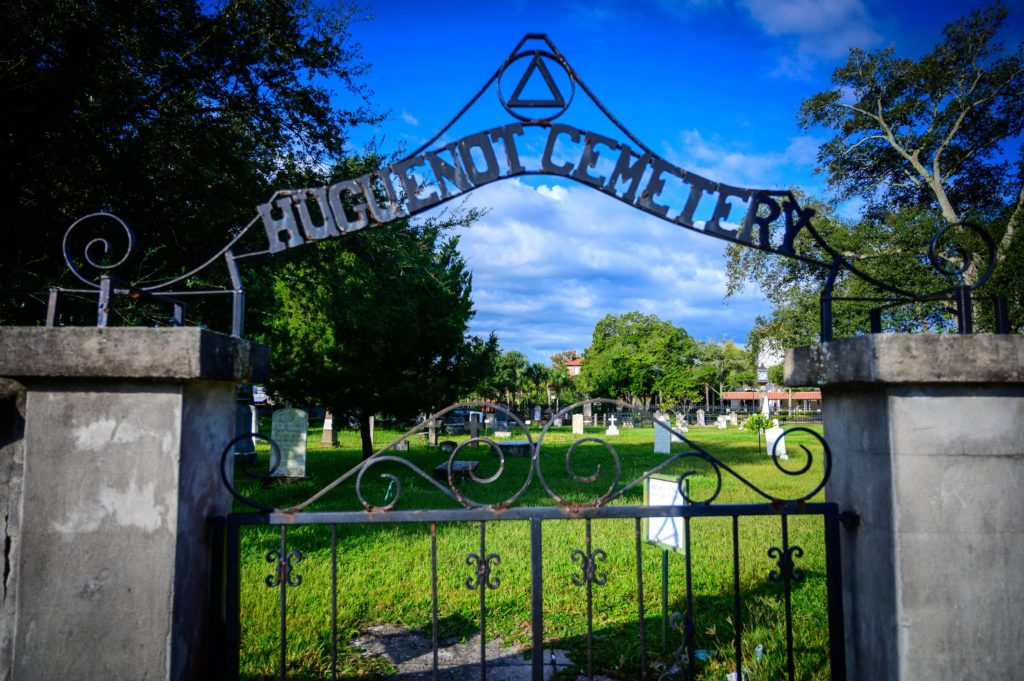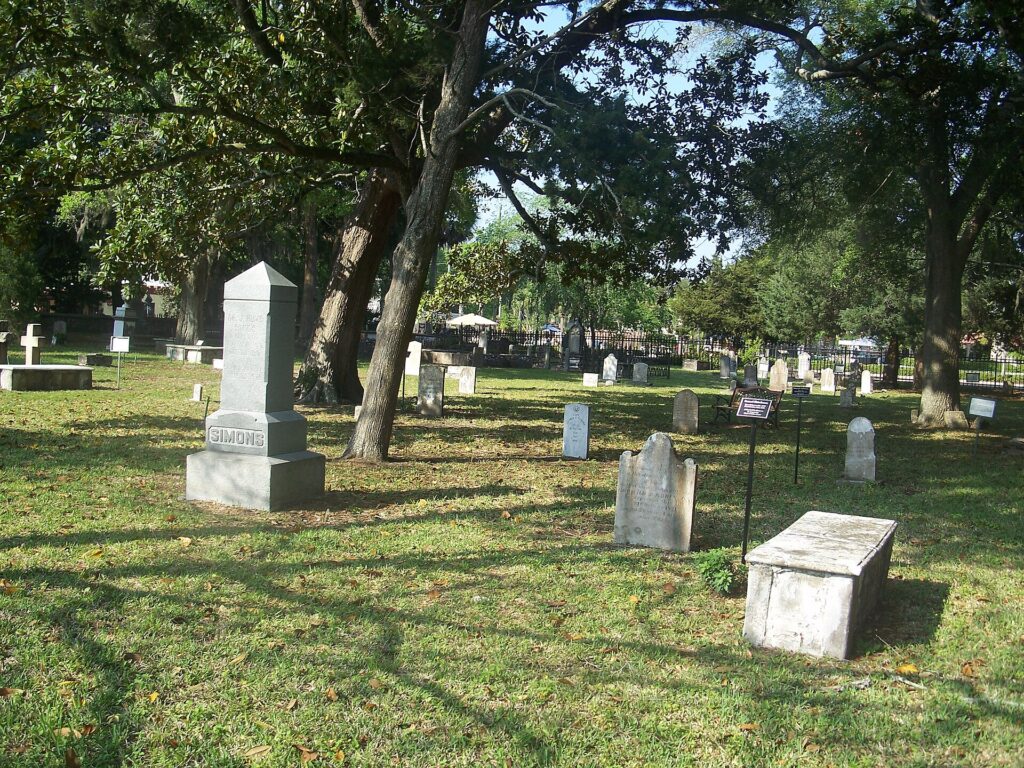Our Campus
The Presbyterian congregation in St. Augustine was organized in June 1824. The congregation immediately began making plans to construct a house of worship, and in January 1825, construction began on a sanctuary and continued for five years.

By 1830, the building was finished and the congregation continued to grow its membership.
In 1866 the church purchased an existing home at the corner of Hypolita and St. George Streets to serve as the home of the minister and his family.
The present sanctuary was given by Henry Morrison Flagler and dedicated in 1890 as a memorial to his daughter Jenny Louise Benedict who died from complications from childbirth.
The Huguenot Cemetery
The Huguenot Cemetery in St. Augustine, Florida located across from the historic City Gate was a Protestant burial ground between the years 1821 and 1884.
The Spanish colonial city of St. Augustine, along with the entire Florida Territory became de facto American possessions after the 1819 signing of the Adams-Ois Treaty. The actual physical occupation of the city and Florida territory occurred in 1821.
Prior to American occupation the Spanish city of St. Augustine was predominantly Catholic and the only burial ground within the city, the Tolomato cemetery, was reserved for Catholics.
Recognizing a need for a formal Protestant burial ground, an area just outside the city gate was chosen by the new American administration in St. Augustine. The first burials occurred in 1821 just prior to a yellow fever epidemic which claimed the lives of a large number of the city’s inhabitants.
The cemetery property was acquired by the Rev. Thomas Alexander, who then turned it over to the Presbyterian Church in 1832, burials continued until 1884 when both Huguenot and Tolomato cemeteries were closed.
The cemetery is believed to hold at least 436 burials according to city records. The cemetery, although named “Huguenot Cemetery,” isn’t believed to contain any members of the Huguenots, a French Protestant sect started in the 16th century in France.[1]


